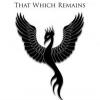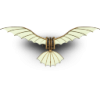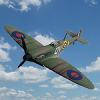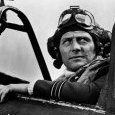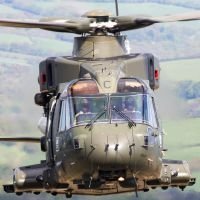Leaderboard
Popular Content
Showing content with the highest reputation on 18/01/15 in all areas
-
Fancied a bit of a break from the GB projects I'm working on so dug this one out of the stash. Started it Saturday afternoon and finished this evening. So who says Airfix's older kits are rubbish? It may have raised panel line but it falls together and looks great. Not so much of a kit bash but a decal bash using decals from the kit, and two after-market sets. I'm rather please with it. Thanks for looking14 points
-
Good evening all. Here's my first finished for 2015. This is the old Dragon kit with Aires engine. Weathering with oil. Thanks for looking12 points
-
Hasegawa 1/48th scale Mitsubishi F1M2 Zero Observation Seaplane type 11 "Pete" With this kit I used the Photo-Etched parts set from Hasegawa. The set included, bracing wires, instrument panels, gunsights and bomb fins. The seat belts are from Eduard. I painted the model with Tamiya acrylic. Artist gouache was used for weathering. Thank you for looking.11 points
-
Thought I'd share my latest completion. This is the excellent WnW Albatross. This was a 2014 Father's Day gift. I started in in November and finished last weekend. My first WnW kit and first WW1 build. I decided on this kit because I thought I owed it to myself to see what the hype was about with these kits. It's all justified. The best OOB decals I've ever used...by far. Rigged with EZ Line and Gastpatch turnbuckles. The woodgrain was done with oils. For my first WW1 I'm satisfied. There are some things I'd do differently next time around though. Thanks for looking!10 points
-
Good evening, Following the post of my last build (thanks for all your kind words) in which i explained i hadn't done much modelling because i had been moving house.I found myself needing new storage for my builds in the new house,so in a different type of 'ready for inspection' this is the result which i am really happy with. Hope to get building again soon with the tamiya f-16 next on the bench.10 points
-
Have an ongoing project to build 5 of these beasts. Build was straight forward enough although slightly awkward due to size on bench. Painted using Xtracrylix Dark Camo Grey and finished with Flory Models dark dirt and an Alclad Klear Kote Flat varnish. Case was from Just Bases although it comes with no markings so i sprayed on some taxyway lines. Only 4 to go. Thanks for looking.10 points
-
Hello modellers, Today again some modern fixed wing aircraft. Although the conditions for quality pics are not the best at the moment, I managed to take a couple of photos of two F-15 Eagles from my collection. The F-15 is one of the few modern jets of which I stockpiled kits. I have Academy, AMT, Airfix and Hasegawa from old and new moulds, some built and some still in the stash. The Academy one has always been one of my favourites as it comes with nice engine nozzles and different angled and deep air intakes. The Eglin based C-model presented here is from that brand, wheras the 36th TFW A-model is from AMT. I took the “Desert Storm” decal sheet from AMT for the Academy model and three fuel tanks from an Airfix F-15. Decals and centerline fuel tank are in my eyes the disadvantages of the Academy F-15. The AMT model was built more or less straight out of the box with decals from Airfix and stencils from the spares-box and a Microscale F-15 stencils sheet. It represents an earlier Eagle from late seventies/early eighties of the “Eifel-Tigers” from Bitburg AFB here in Germany. Both models have pilots from the Hasegawa sets. Hope you like the models Mario9 points
-
I've been able to spend a few hours at the bench this weekend and have started work on the surface detailing of the C-17. Although the Combat kit does have some very basic panel detail provided, the nature of these kits makes the detail soft and the panel lines in particular are way over-size. Therefore, I usually find it best to fill the details in and make my own - this way I can hopefully re-create the very delicate recessed lines on the real aircraft by scribing straight into the filler-primer. However, the C-17 is an interesting beast, and in fact a lot of the panel joins are in fact reinforced with plating - the picture below (used for illustrative purposes only) is a good example of that I mean: My solution was to get some packs of Evergreen strip (0.10 thou) and recreate these strips on the model, using the excellent Revell 1/144th kit as a guide to their placement: Other raised details have also started to be added - here is the forward LAIRCM (Large Aircraft InfraRed Counter-Measures) mountings found on either side of the forward fuselage - much more detailing will follow here but I wanted to get the basic shape in place before further fettling: The C-17 also has two distinctive fins adjacent to the rear of the cargo door - my research suggests this is to improve airflow around the rear of the aircraft when the door is open in flight. These were added from plastic card using the Revell parts as a guide to their shape and positioning. I have also added the upper undercarriage doors to the sponson, which stand slightly proud of the airframe when its on the ground - again plastic card to the rescue: The winglets have also been finished off and primed: I've also scribed in the cargo door and added the 'bump' guard from more plastic card: And that's where I'm at at the moment. I've still got a fair bit of raised detailing to do, before I commence with the laborious task of scribing in the recessed panel joints... which should keep me out of mischief for a while. Until next time, Tom9 points
-
I googled Gator glue after I saw you using it on the Skeeter build Andy Must get some and give it a go. Too late for the JPs tho. Nearly 100 pages........shamful ain't it. We'll now Bill. I'll tell you in a mo'. It's been a day of Mrs F inspired DIY (well ordered rather than inspired if you know what I mean) but I diid get a bit of time with the JP and I do believe I have finished the MDC...... It went this way in the end: The Krystal Klear proved up to the task of holding the wire in place to begin with. I then used tiny drops of Johnsons Klear (too many products called Klear here) at a few points on the wire - relying on capillary action to draw it along the wire - to further fix it to the canopy. I was then able to trim the excess wire and also trim down the dried Krystal Klear to reduce its footprint. Anyways - the end result is this: I'm pretty pleased. It was kinda fun doing it and it looks pretty good at normal size where any lack of symettry between the two sides is less apparent If I was doing it again I'd do it earlier in the process. Having to be careful handling the otherwise finished canopy made a fiddly job even harder. As it turned out I definitely needed to anneal the wire - it was too springy otherwise, notwithstanding that I initially thought it was soft enough.9 points
-
Hello! This is my "have a crack at" Hasegawa's 1/48 E1 109. Basically, it is the E4 kit which one needs to backdate. I bought this kit purely because of the markings that came with it as I have always wanted to build "Red 16" with the devils head on the fuselage. I did a pretty poor job on this kit the first time round, stripped it back and rescribed it. The wings had the underside bulges removed and some Eduard PE with some plasticard was added to the office............I wanted this one to turn out better than it did, but there's always next time! Anyhoo, I am calling this one done. Feel free to let me know what you think!8 points
-
Since starting this hobby 3 years ago I have always done one weird model each year 2014- Airfix 1/72 Spitfire MkVb with a jet engine and front undercarriage from a me-2628 points
-
Hi All, It is done! Skunkmodels 1/48 HH-60H Rescue Hawk HS-6 "Screamin Indians" Wolf Pack tail fold Cobra Co Naval main rotor head Eduard interior & exterior PE sets Armycast mini gun set Fireball ALQ-144 Authentic decals Gunze & Tamiya Acrylics. Thanks to those who followed the ups & downs of my first WIP. Thanks for stopping by Cheers, J7 points
-
Hi, Second Italian bird from archive shelf for today - Breda Ba 65. Wiki tells about her things like that: http://en.wikipedia.org/wiki/Breda_Ba.65 This is vacu kit by Rareplane, I made it about 20 years ago. The airplane was a ground attack machine, which was rather succesfull - 218 build (for pre-war time it was not few) and exported to some countries. Here markings are from 101 Sq, 5 Stormo, Regia Aeronautica from Autumn 1939 - spring 1940 period. Decals from drawer. Now there is a kit available (or not?) by Azur. Regards and comments welcome Jerzy-Wojtek7 points
-
Hello modellers, Here are two older builds from my collection. Both are Revell models, but Monogram origin, so I think and were built in the mid-nineties. As collegue Jerzy posted a Tigercat two seater yesterday, I thought I could show my single seated F7F-3P, too. Originally I had planned to do a two seater nightfighter from the kit (alongside Italeri´s F-4U5N Corsair) as a Korean war duo. As I couldn´t find a adequate rear canopy and decals, I finally built it from the box. Only added some bombs and rockets from the spares-box and antenna from sprue. The Revell P-38 also not bad, despite of it´s age and the raised panel lines. It can be built as a P-38 J or a two seater P-38 M nightfighter from the final days of the Second World War.. Found the blue of the national insignia to light, so I used the decal sheet of the Dragon P-38 to represent the well known aircraft of fighter-ace Thomas McGuire from the Southwest Pacific. Both models need a huge amount of nose weight and in case of the Lightning storage is a problem, as it comes with the option of open front panels to show the machine guns. I sealed that panel and added weight instead of guns. The barrels were added later from the outside. I used canulas of different lenght for that. Hope you like the models, Mario7 points
-
i make my own decals and i have been wanting to do this livery for quite a while since seeing it for real at Manchester Airport a while back here are some pictures of the finished model i converted the Minicraft 757-200 into the 757-300 and added my own made winglets Richard6 points
-
And a second from the S.O.D I picked this up at the WA Model Expo back in 2013 and made a start on it early in 2014. Its the first time in a while that I have had to deal with resin (not so bad) and photo etch (yuck). I once again rediscovered my dislike for superglue. This is a re-pop of the Grand Phoenix kit, and a search on the internet gave me a heads up on some of the issues, in particular the fitting of the resin wheel wells. All was going well until I got the main airframe together - and then I stalled. It probably had to do with the copious amounts of filler I needed to use. So after Christmas, with plenty of time to hand I went back to her. It is completed as a machine from 1770 Squadron aboard HMS Indefatigable in the Pacific, 1945. I replaced the tail wheel with one rescued from a long departed model. I replaced the rather odd shaped spinner cap with Tamiya Mosquito one that I had in my spares box. Photo etch was as gruesome as I remember it - real botch job getting the cockpit rearview mirror. Still hate cyanoacrylate glue - it may be great for sticking things (or detecting fingerprints), but I don't get on with it. Brush painted with Tamiya acrylics, some muckying up with watercolours and finished with Humbrol Mattcote. Thanks for looking.6 points
-
Hi all, i finally "finished" my 1/72 scale old tool airfix spitfire mk Vb. of the 350 squadron Not fully happy with how it came out but I learned some things, had fun, so that's what counts. a picture of the actual aircraft http://www.350sqn.be/stories/350Presentation_aircraft_files/YAUDE...FLOHIMONT.jpg some in progress shots here. http://www.britmodeller.com/forums/index.php?/topic/234973341-172-spitfire-mk-vb-airfix/?p=18376376 points
-
6 points
-
Not much progress this week, but done some work yesterday on bits n pieces including the turrets. Some of the rear turret parts are included in the Mk.II Lancaster set but not all. Thanks to Simon for posting a link to Scalemodellingnow.com where the following image was referenced (I've added the red rings in), the parts not included in the Mk.II kit are ringed in red, so these were scratch built. As I don't have any 50 cal barrels, the flash suppressors were chopped of some 303 barrels: This is how the bits look now, not too far out from the instruction diagrams: The mid upper has been made using a combination of kit parts and some scratch building. The gun barrels on the real thing actually protrude from the thick base part at the bottom, not the centre. I tried to replicate this using a plastic part drilled, but gave up in the end and used to diameters of brass tube, but I think it looks OK. The breach end of the guns need cutting off yet and scratch building more accurately. A ring had to be added to the kit turret part to increase the diameter too. This is how it looks so far, I've added the wing tip nav lights now too. Cheers Neil6 points
-
Hi Years ago the Revell CR 42 was the only one on the market. I made it for the first time about 40 years ago, and some 20 years ago I was not able to accept any longer it bad look. I removed old paint and tried to reshape as much as possible. I made wider rear part of fuselage by about 1.5 mm but still it remains too round, I am affraid. I reshaped the cowling and the undercarridge as weel as added some inlets and outlets of air. At present much better kits are available (Pavla - second hand and Italeri) so perhaps one day I will try again to model this very nice Fiat last biplane. Markings are from 162 Sq., 161 Gruppo, Scarpanto (Aegan Sea area), IV-V 1941 so from the war against Grecce. Decals by Esci (also about 40 yrs old now, rather tick...) Please have a look - comments welcome Regrads Jerzy-Wojtek5 points
-
Having learnt a lot from browsing the Britmodeller forum, I thought I should return the favour by outlining the planning and building stages I'm going through to create my model. I hope it's interesting and helps others to approach their modelling tasks. I hope to build up this topic with a series of postings over time. I'll start here with a bit of the history leading me to this point. My Dad served as, amongst other things, an air gunner with Bomber Command during WW2. He earned his DFM from 30 missions. 29 of them he was a mid-upper gunner and one a tail gunner. The tail gunner trip was to Peenemunde - to bomb the V1 /V2 research station. The other trips included several to Berlin and a round trip to Cannes. You can imagine he has a few stories about incidents on different missions, as well as life generally. It was his 94th birthday the other day and we talked over a fair bit. After taking Dad to London to see the Bomber Command Memorial, I decided I wanted to make a model of one of his aircraft. Dad's operations were with 76 Squadron, flying from Holme-on-Spalding-Moor. I knew from talking to him that the Halifax aircraft he went on ops in had Merlin engines, Dowty undercarriage, rectangular tail fins and the later perspex nose as well as, I was pretty sure, H2S. This made them the Mk V Halifaxes. Squadron records confirmed that they were Mark V, but bizarrely my Dad's log book says in the header they were Mk IIs. As that header is in the same ink and hand as that of the officer signing off the log, you would expect it to be right. As a double check, I looked up every serial number from the log book in the production records - these confirmed them as Mk V in every case. It just shows that you need to check all your facts. To emphasise the point about research and validation by cross checking: I have gathered various books and photos to inform my build and get the details right. I will be making two models. The first is a practice run to get my skills up - it will be the Matchbox kit and represent the one he was in over Peenemunde. The second, for a diorama, will be the aircraft he was in most, depicted for the Cannes op using a newer Revell kit with some after market amendment. There don't seem to be any photos of either aircraft, but the latter was LK646 part of the same batch as LK640 - an aircraft whose photo has been much published. The largest print is in Bruce Robertson's Halifax Special. There is also a colour profile of it in Osprey's Halifax Squadrons. The only bit of the Osprey colour image I was put off by was the old style tail fins. My understanding was that manufacturers were putting the late fins on by then. The photo misses the tail off. My Dad tells me that LK646 arrived with rectangular fins and that 76 was fully rectangular fins on main operational aircraft by that point. I will put dates and details in a future post. Well, I showed the colour LK640 to my Dad, thinking the only difference he would highlight would be the tail fin. No, he also listed the absence of an H2S dome; the need for a Vickers k gun in the nose; and, a perspex blister aft of the H2S dome, which he used for watching out for fighters from below. So, even very close in batch numbers from the same manufacturer, the details can vary markedly. Further, most relevant photos suggest that the aircraft code letters appeared on the undercarriage. I would have planned to put them on my model if Dad hadn't said they weren't on his plane. That's a preliminary post from me, my first on the forum. Future post should add detail and show how my builds get on. Cheers Andrew5 points
-
Hi all! It's been ages since I've put anything up on BM, the stresses of moving house and starting a PhD have limited my modelling to the bare essentials of getting builds done. Anyway, here's my most recent effort, a commission build for my mum's 60th birthday. She's not much of an aircraft fan, but has always had a soft spot for the DC-3, so when she asked me to make her a model someday, I chose this: a DC-3 in civil marks as operated by Dan-Air London in the 1950s-1960s. The kit is the new Airfix: irritatingly the civil boxing wasn't even due to come out until after mum's birthday, so I had to convert the military C-47 kit. This entailed filling all the moulded metal detail on bulkheads etc, covering the ribs and stringers inside the fuselage with plasticard (fun to cut around the windows!) and scratchbuild 16 pairs of airline seats, complete with seatbelts, from plasticard and foil. I also added throttle and mixture levers to the instrument panel, and represented the quilted soundproofing so often seen in 1950s cockpits with scored foil. Decals are S&M decals modified to represent my chosen subject, G-AMSU. The number of windows on the fuselage stripe decals was wrong for G-AMSU (an ex-C-47 with cargo doors retained) and the spacing wasn't quite right either, so I painted the stripes instead, and just used the tail decals, serials and fuselage stripes. The interior colour scheme is largely guesswork: I only had one very tiny B&W photo to go on! I ended up copying the seat colour from a very poor quality colour shot of a Dan-Air Airspeed Ambassador. Hope you like her. Mum certainly did!5 points
-
Last model completion before the end of the summer holiday and heading back to work tomorrow morning. This was intended as a quick build back in October last year, but it got stalled 3/4 completed. There are three options in the Hobbyboss Los Angeles class kit, but I was really drawn to the USS Chicago with its bulls head. Nearly regretted it at the end - it wasn't the easiest decal to get in place. I am still not sure I managed to get it correct - but I didn't want to risk it so once it was sort of straight I left it. Thanks for looking.5 points
-
Hi folks, I'm a bit scared of posting my efforts here but it seems worth sharing some images of unusual planes! We went to Wings over Wairarapa at the weekend, a grand day out in scorching heat, thankfully the winds were light enough that nearly all the WW1 aircraft were permitted to fly. Seeing the Fee in the air was a real treat: I took ~800 pics and whittled them down to about 50. The results are a bit soft and noisy, sorry about that. I'm not wild about the E-mount telephoto I have (Sony 55-210) - it had a hard time locking focus, and I didn't bring my reading glasses so I had a hard time locking manual focus! Tips would be appreciated btw - I tried pre-focussing where possible but found it hard to predict distances. I wonder if the autofocus was fooled by the heat - I saw a lot of heat shimmer once I'd got home and looked at things close-up, even apparently on some of the in-air shots. The other thing that bothers me is the skies seem way less detailed through the zoom - compare to the pic of the taxiing Spitfire (taken with the RX-100, which has a really contrasty lens) and I find it hard to recover this without messing with the colours. Anyway, here are some selections, click on anything to get to the Flickr set for the rest of them. The family enjoyed themselves too Cheers, Will5 points
-
My fellow modellers, may I present for your entertainment my first completed model for 2015. I built the Hasegawa P-40 Eggplane & added a Retro kits pilot for the P-40 Group Build. On Eggs-amination of the kit, it was found to be a little basic so I scratch built & added new details to the cockpit, seat & also the engine cooling flaps on the underside. Artistic licence has also been used in the decaling. Without further ado, please be upstanding for Capt Sam O'Nella & his Egg-ceptional P-40. Comments always welcome, thanks for looking5 points
-
Oh, I completely agree. I suppose I'm nominally a child of the 1990s, since I was only seven when 1990 rolled around, but by god, what a wretched decade. I both enjoy the 1980s and find them fascinating, from a historical perspective; they represent in some way the end of continuity from World War II -- Gorbachev was the first Soviet leader not to have lived through the revolution or been old enough to serve in the Great Patriotic War, for instance -- and in a sense the final summing up of that war, as the postwar political settlement came to an end. So there's a sense of sadness, of something passing, which I'm always a sucker for, but also a sense of fun to them, and certainly absurdity, as the obsession with thermonuclear armageddon (which IMO was never a real possibility after 1986, and remote before) really drove culture into some weird places that the detente-ish 1970s never did. I dunno, it was riotous and anarchic and simultaneously very, very button-down (the weird fusion of modernity with the desire to throw the clock back to the fifties?) and I imagine it might have been a terrifying time to be an adult -- Fort Sheridan was at the end of my block, and I lived near the late and lamented Glenview NAS and Great Lakes NTC, so in the event of a war, I'm sure I wouldn't have had time to realize it -- but looking back from now, I really love it. Plus, best sci-fi movies ever! Aliens, Predator, the latter two Star Warses, Star Trek IV, Blade Runner, Mad Max, etc etc etc. It still looks a bit dark to me, compared to Humbrol's Dark Earth or the almost sandy-looking DE I see on some builds here. But this chorus of reassurance is working its magic. So I started masking: The extended MLG really make this less fun than it might be. Then it was time to spray. I used Flat Black; I know some of you use a very dark grey, or Tamiya NATO Black, but I use that for my tires and in any case it reacts really badly to normal acrylics if you don't wait a lot longer than I've waited. I fear I'll blow past my deadline, as I have a birthday party for an uncle to attend tonight, some TV to watch with my sister, and Mrs. P (semi-)patiently waiting to go for a walk, as temperatures have skyrocketed to 4.5 celsius.5 points
-
More updates,that's the hull completed,glad that's over,can get back to painting,the bridge is on just for photo,s5 points
-
Here is a completion of mine from 2012. This is the Lightning F2A, built from the Airfix kit. I bought the kit and started it in 1998 when it first came out, but got stalled on it. I pulled it back off the shelf when I got the Eduard/Airfix reissue of the F1A/F2 as a review build for Modeling Madness. I was going to finish both kits concurrently, but ran into paint problems with the F2, so it got finished later. The kit recieved a Cutting Edge resin cockpit, but is otherwise stock. The NMF finish is Alclad II Aluminum. For the polished intake ring, I used Alclad Polished Aluminum over a base of Floquil CSX Black. The blue on the spine and tail is Xtracolor British Airways World Scheme Blue, which is a very close match to RAF Roundel Blue. Squadron markings and roundels are by Cutting Edge, with stencils and walkways from Barracudacals. For the gun openings, I used the smooth plates intended for the F3, and carefully drilled out the openings using a dental burr. The pucker factor was sky-high for this, but it worked, and they look much better than the poor kit offerings. (ASIDE: why hasn't some resin maker done good gun troughs for this model?) Andy Sarasota, FL5 points
-
Hi everyone Well that's that! I'm calling my Mustang finished. Its been a great kit to build with no real problem areas (apart from those imposed by the builder) and it captures the look of the P-51 perfectly. I've weathered it quite heavily as my reference pictures showed that they were worked hard in some very rugged conditions. I was going to change the prop for the correct Aero products unit but once I received it I was very happy with its molding so I elected to leave the original Hamilton unit in place until such time that I can must the energy to put it right. I'll post some better pictures in the RFI section once the weather here in Kernow improves and I'd like to say thank you to everyone for their kind words and encouragement - cheers!! Now to get on with my Javelin!! Yours aye a very happy Iain5 points
-
Managed to crack the fuse open a titch masking everything, blorg blarg blergh. In the future I'll just buy the damn AML masks. Look out honey, I'm using technology. The green is Model Master's RAF Dark Green acryl, which looks correct only after a gloss or flat coat is applied, and until then it looks like Light Slate Grey. Vallejo Air scratches and lifts easily, I've found, which I don't much care for. Might have almost applied future over it before masking had I known.5 points
-
I somehow lost control of Photobucket, but I'll post what I have. Firstly, my workbench. I have all my bits and pieces in boxes, so I may take them out on a Saturday and Sunday morning, and set up my modeling life. Close up of the working area - and my view while modeling. Set heat, light, dryness and musical choice ( tons of Ramones, Oingo Boigo, der Aertze, Rolling stones, Alice cooper etc, and let the gluing begin. The new engines I stole from a kit in the stash The wings in their grey colour A view off my patio - a palm tree in mid-winter. ( Just 'cause I can ) New engines primed and sprayed in gloss white Die Pudeln, also enjoying a mid winter break Somehow, I lost other "under construction" photos, but should be able to continue tomorrow. Mike5 points
-
OK, final update for today. This was tricky to photograph but I added in my brace parts: I then discovered there were a few more bits of PE that I needed to add to the engines (82 and 93b): I first burnished parts 82 to a curve on my cutting mat with my favourite tool: Here they are applied: Then were then these little parts on top of the engines: Getting back to that wing intake, I applied some matt black to the areas involved: When assembled it looked like this from the inside: And from the outside there is a nice black hole effect: More to come tomorrow. I should get the wings and tail assembly sorted with a fair wind. Bye for now, Nigel.5 points
-
Hi mates! For the past several months I’ve been working on a model of the DAP (Department of Aircraft Production) Beaufort Mk.VIII. This is the improved version built in Australia under license from Bristol during World War II. 700 new Beauforts were built by DAP, and were used extensively in multiple roles. “Bar the Gates with Beauforts!” My model represents “Snifter,” a Mk.VIII from 32 Squadron that was used for anti-submarine patrols out of Lowood, Q, from May 1944 until the end of the war. The model is rendered in glorious Braille Scale, as all true models should be. Special thanks to Ed Russell for his help during this build. No matter how silly my questions were, he always had the answer. Thanks also to Tony O'Toole, always a source of great information. You can find the WIP here, and as usual here is my Executive Summary: Project: DAP Beaufort Mk.VIII “Snifter” Kit: Special Hobby DAP Beaufort Mk.VIII Kit No. 72027 Scale: 1:72 (The One True Scale) Decals: Snifter markings and codes from Encore kit 1010, other decals from Special Hobby kit Resin: From the kit including top turret fairing, cockpit, seats, instrument panel, engines, tailwheel strut, exhausts, spinners, carburettor intakes, Browning machine guns, and bombs; High Planes Models 72023 including YAGI aerial supports Photoetch: From the kit including all antennae, and bomb rack details; Brengun photoetch set 72059 including main gear doors, machine gun sights and details, and main landing gear details; Marabu Designs photoetch 72002 British landing lights Canopy/turret Masks: Montex set 72123 Paint: Gunze H302 FS34092 (standing in for Foliage Green), H364 Interior Grey Green (my own custom counterfeit recipe), H47 Red Brown, H414 RLM 23 Red, H34 Cream Yellow, H90 Clear Red, H94 Clear Green, H38 Steel Red; Testors 1139 Semi-Gloss Black, 1795 Gunmetal, 50160 Acrylic Flat Clear, Floquil 110100 Old Silver, Lifecolor FS 24092 Foliage Green (thanks Procopius!); Tamiya XF-69 NATO Black, Alclad Klear Kote Flat Weathering: Pastel chalks Improvements/Corrections Removed Mk.I tail and rudder from fuselage, replaced with Mk.VIII tail and rudder Removed Mk.I turret fairing and replaced with resin Mk.VIII turret fairing Detailed cockpit and interior with plastic strips to represent structural members, added photoetch instruments and plotter Added campaign map of Australia and goose neck lamp to navigator’s desk Scratch-built navigator’s swivel seat Added strip of clear plastic behind portholes to prevent them from pushing through into the fuselage Scratch-built shelves for radio gear behind pilot, radio and electrical boxes made from spare photoetch parts Drilled holes in front greenhouse and top turret for gun barrels Twin Vickers guns from new Airfix Blenheim kit added to nose, detail with Brengun photoetch Replaced kit landing gear doors with Brengun photoetch Cut out areas of wings for navigation lights and landing lights Navigation lights made from pieces of clear plastic from plastic knife; cut, sanded, and polished to proper shape Navigation lamps made by drilling small hole into the clear plastic navigation light, and painting the inside of the hole with the proper colour (clear red for port, clear green for starboard) Built up inside of engine cowlings with plastic strip to reduce its diameter and better represent the actual cowling Landing lights added from Marabu Design photoetch; landing light lens from vacuform plastic Drilled out fuel dumps Scratch-built wing fuel vents Detailed main landing gear with Brengun photoetch Detailed bombs and bomb racks with photoetch Added rear fuselage ASV antennae from photoetch; each is attached via a 0.015” hole drilled into the fuselage side Added photoetch/hypo needle pitot tube and photoetch radar transmitters to forward fuselage Added photoetch attachment points to pylons Added photoetch drift sight bracket to starboard forward fuselage Drilled holes in leading edge of wings for guns, added hypo needle tubing to represent gun barrels Added resin supports and photoetch YAGI aerials under each wing Added photoetch ammo belts and gun sight to top turret guns Added main aerial from 0.005” Nitinol wire Deployed D/F antennae modified from kit-supplied photoetch Added upward firing gun window from clear plastic sheet with painted framework, gun barrel is resin Elapsed time: 5 months! Bloody hell! On with the pictures! I hope you enjoy the photos as much as I'm enjoying moving on to another challenge! Cheers, Bill4 points
-
Long time lurker here, de-lurking by building this fossil. It's a project I'm doing on another forum for a Nightfighter sig, and I thought I'd share the fun. Just a warning; First Long Post is Long! Blimey... 1965... https://www.scalemates.com/products/product.php?id=162040 This thing is actually older then I am! Without further ado; Ye Olde Box! Savvy folks among you might have noticed the lack of top turret on this one. But I will probably scratchbuild that. Ye Olde Plans! 'Splodey-view FTW! Ye Olde Pile'o'Parts! The kit was like that when I picked it up at a model show aaaages ago. Looks like several of the previous owners unpacked, examined and repacked it all. But I think it's complete. Dryfit of the main hull with the clear parts, which are very nice considering the age of the kit. As you see; no top turret. But I am sure I can bash something together. The interior as provided is very sparse too, but my mate indeed still has the Airwaves PE set (for the Dragon kit) and I am going to use that to make something. But that will have to wait until after X-mas, since I won't be seeing my mate until then. He also had some Black Widow decals left over from a Nightfighter set I could have to replace the sad little roll of decals that didn't survive all the years... But! I can crack on with the rest of the kit, starting with the wings... The raised detail is very fine, and I will try to save it whenever I can. But the cowling-flaps bother me... So, first an undeep cut with the razor saw... ...and some judicious filing, fettling and sanding later we have enough room to add new cowling flaps from 0.25mm styrene strip. Round One... FIGHT! Itty-bitty bits of 0.25mm styrene (About 2.25 by 4mm) all glued around the groove I made... Round Two... FIGHT! Yeah... even tinnier bits of styrene... I think about 2.25 by 1mm) behind the main flaps... KNOCK-OUT!!! One down, one to go... This one just needs a rub-down with a sanding sponge when all the glue has set. If sanity was easy, everybody would be doing it... Which means I will be compelled to do that myself, foooooool that I am... But look what my mate dropped off friday night! (he forgot the decals...) It's for the Italeri kit. This kit -definitely- isn't the Italeri kit... But that's not going to stop me. I started with one of the fun bits; the rear hatch. Loads of tiny PE parts that need to be folded and made to fit a very different kit. I annealed the hatch part and rolled it between a brush handle and a bit of tissue to get it to curve... ...and used the PE part to mark where the hole is going to be. Ofcoure the curve of the fuselage on the Frog kit is totally different from the Italeri kit. So I need to replace some PE parts with thin styrene bits. But about two hours of soft-voiced blasphemy later we have a hatch... ...and a hole to fit it in (with some Bluetack for now...) Some ribbing fitted. Just needed a little trimming to work. And you can see the PE bit to make a map case... The instructions tell you to fold a piece of PE into a map case, which ends up being about 1mm by 4mm... Well... How about we stick the flap and top bit to a piece of 1mm styrene? Close enough! Time to ransack the spares box for a couple of seats and see if we can make something resembling a cockpit... And then I did some research (and frankly, other people's builds of the 1/48 kit are more useful then pics of the actual airplane)... ...and found out I cut the hole for my hatch about 7 or 8 milimeter too far forward. So that needs fixing... But I didn't really feel like figuring out that job, so I focused on the front office. The kit itself only offers you a couple of shelves and a pair of pilots. So we build a floor, a bulkhead and an instrument panel from styrene card and the PE for the Italeri kit... Like a glove! A nice relaxed day of tinkering around and it is starting to look a lot like a cockpit worthy of the open hatch the Frog kit -does- have... Still a lot of fiddely bits to go, like the pilot seat, control stick and the sight for the gunner. But I like it sofar... The frame I did for the gunner's chair. In the Black Widow it was on rails, and it could swivel... Uhm... yeah... the chair swivels... did you expect anything else? Another afternoon of relaxing cockpit work... It's very Zen, puttering about with tiny bits of styrene and PE... More sidewall goodness. It looks a bit rough between the ribs, but I am going to clean that up. Tamiya ET rrrrreally like 1960s Frog plastic... Looks very nice sofar... ...and the huge hatch in the Frog canopy really does it justice. I've been mostly working with shots of a 1/48 GWH P-61 build I found online here; http://web.ipmsusa3.org/content/p-61b-black-widow-last-shoot-down-1945 as a reference. Beats having to decipher 1940s black and white photos... Then I made a start with the rear cockpit, making a new bulkhead and floor... Built up a plug to close the bit of hatch I cut out in error... It fits, and it just needs sanding into shape... It's costing me some panel lines, but they need to go anyway. When Airfix had their Mad Rivetter, his brother the Crazed Linesman worked at the Frog factory... Nicely blended in, with a bit of PE added... And it fits well, making a nice blank canvas... The example I have to copy, and the size of my part... I'm starting to go cross-eyed, but I'm getting there... Ta-daah! Really curious how it will look with some paint slapped on... Someone on the Dutch forum I haunt asked me for a picture to get a sense of scale... (You know, I'm pretty chuffed with how that large-scale wooden slide caliper came out. Only little nag I have is having to wait until 22 past 3 in the afternoon until I could take my picture so my alarm clock would show the right "size". But that oversized 1 Eurocent piece = Best Investment Ever!) Did some work on the front bulkhead this afternoon. Some ribbing, greeblies and oxygen/compressed air bottle... Uhm, yes... that's going to be a 1/72 scale fire extinguisher... why do you ask? In other news; someone on anopther forum offered me the turret from the 1/72 Airfix/MPC Black Widow, which means I don't have to scratchbuild it. Score! Now what should I build with the time that frees up..? Maybe... Nah, that would be silly... After New Year's eve, my turret parts turned up... ...and got turned into this. Had to add a little shim to the rear of the guns, because the gap was rather big. It looks the part tho... Also replaced the dimples that were supposed to be the guns into something that actually looks like guns... All that work on the main fuselage pretty much obliterated most of the raised detail (which there was way too much of anyway... Frog really had a Looney Linesman...) so I did some rescribing. Before and after... Main fuselage and tops of the wings done. I found a 4-way view and used it to do most of the panel-lines. I didn't do -all- they indicated on those plans, just enough to look busy (and not as busy as the original patchwork this old kit had.) Rescribing is a long, slightly maddening proces. But it gets you results! Just the tailbooms to do. But some preparations first. The landing gear kinda needs to be installed as you close them up. But to prevent them from snapping off while I work on the booms, I decided to take a notch out of the bushings so I can install the legs later. Minor surgery was a success! Booms glued together, ready for rescribing... Now ya'll are up to speed on this build. More soooon! Rob4 points
-
Hi mates, Time for a new project. My New Year's resolution, besides killing my cancer, is to NOT take five months to build a model (like my recent PB4Y-1 and DAP Beaufort builds)! So I figured that a smaller model won't take as long - enter the Brewster Buffalo. The Buffalo is a dichotomy in many ways. The earlier versions were superior to the latter, "improved" versions, and the kill ratio was actually quite good even though it had a reputation as a "flying coffin." In the hands of the Finns, the Brewster proved to be a formidable opponent indeed. The legacy that the Brewster was responsible for the loss of Singapore had more to do with it being vastly outnumbered by the Japanese, and it being flown by relatively inexperienced pilots, unlike its opponents. And like many of the early war aeroplanes, it was essentially obsolete by the time the war really got going. Further evolution of the Buffalo was not possible, as its manufacturer was caught in an export scandal, taken over by the US Navy, and relinquished to building sub-assemblies for Grumman, etc. The successes of the Buffalo in combat says a lot about the courage and tenacity of the youngsters tasked with strapping into it every day. So let's build one of these tubby little buggers, eh? The Special Hobby kit consists of short-run injection moulded plastic, beautiful resin cast parts, but strangely no photoetch like most of their kits. No matter, I had enough photoetch for a while on my Beaufort build! First, the scene of the crime (Memsahib has cleaned up the workbench since the finish of the Beaufort!): Here are the "traditional" raw materials: And the resin - this, in my opinion, is where this kit really shines. The resin is superb, very nicely cast, and will add a huge amount of detail. Since this is a short run kit, it will have some characteristics that, quite frankly, prevent it from being built the same way a mainstream kit would be. For instance, the resin sidewalls can't be attached until you remove this rather large pour lug (I think that's what these are, due to the low pressure injection moulding technique used.) You could say this is poor design, but I wouldn't because I'm not a plastic moulding engineer. I have no idea why the lug needed to be right there. In any event, it's easily removed, in my case with a Dremel tool. Another thing you notice right away is that there are no alignment pegs. When this is of biggest concern is when you're assembling all the pieces of the cockpit and the area where the landing gear retract, which also contains the engine bearers. The instructions do not do a very good job of telling you what goes where. But that is why we are modellers, right? It's like a puzzle with no picture on the box! To solve this equation with multiple unknowns, I look for a part that I consider to be the "keystone." In other words, a part that can only go in one spot, and then build out from there. In the case of the Buffalo, I chose the forward cockpit bulkhead/firewall (we'll call it a firewall) because it has the scalloped recesses for the tyres when the gear is retracted, and these have to align with the cut-outs in the lower forward fuselage. Here is the firewall, this being the side that faces the engine: Uh-oh! Welcome to another fun part of the short-run world - notice any difference between the scalloped area on the left and the one on the right? Me too - the mould has been damaged, and it looks like a big piece of crud is now obscuring the scalloped area on the right. Again, easily solved with a ball-end grinding tool on your Dremel. You need to be on the lookout for this kind of stuff. Special Hobby have released the Buffalo in several different variants. I'll be building the Model B339E, or the Buffalo Mk.I. The 339E had a different fuselage structure right at the very end, and you have to cut away the one that's there (which is correct for a US Navy F2A-1) and add the 339E appendage, which is more like a tail cone. All cuts are along existing panel lines: Now let's add the keystone (you'll notice that I removed the crud): Next, I glued the rudder pedals onto the bottom of the instrument panel, and in doing so Mr. Fumble Thumbs managed to break off the coaming, which was more delicate than I expected. I got out my usual superglue, Zap-A-Gap (gotta love that name) and something quite odd happened. It didn't work. No stick. (I tested the Zap-A-Gap on some plastic to see if maybe the glue was bad, and it worked fine.) For some reason, this particular resin is impervious to Zap-A-Gap. Much strangeness, I think. I then tried one of the new "alpha" cyanoacrylate adhesives, in this case Max 1 from Germany, and it worked fine. A little putty and all is well. The forward bulkhead (we'll call it that) will have the resin engine on the front, and the supercharger on the back. In-between the firewall and the forward bulkhead are the engine bearers, or mounts, as well as some components for the retractable landing gear. Here the instructions are quite nebulous. A clue, and an important one at that, are the four small indentations on the back side of the forward bulkhead, for this is where all those engine bearers should attach: I don't believe there was a solid bulkhead in the actual aeroplane. The raised ring around the outside of this piece is meant to represent the exhaust collector (the Buffalo had two exhaust outlets, one on each side of the lower cowling). The resin supercharger chamber will mount to the center of the smaller embossed ring. The lower area with the mesh screen effect moulded in is the oil cooler. Assembling the engine bearers so that they will attach to the four small holes leaves us with this: Welcome to short run modelling, part three. The two lower engine bearers are considerably too long, and protrude in the front beyond where the forward bulkhead should be. Notice the pencil line that I drew in the fuselage? This is where the forward bulkhead goes. For some reason, there is a raised edge on the port fuselage half to indicate this, but Special Hobby neglected to continue that edge on this half. No matter, my pencil worked just fine! A quick snip of the side cutters and the lower bearers are now the correct length. Next, I added the fuselage side panels using the Max 1 superglue (this stuff bites almost immediately so be very careful in your placement!): I aligned the top edge of the sidewall with the top of the fuselage. I'm pretty sure this is the correct way - we'll find out soon! At this stage, I did a dry run of the two fuselage halves, and the front of the cowling. I wanted to know if the firewall was going to need some sanding in order for the two halves to close. The answer is yes, if you want the fuselage halves to close. But thank goodness I also taped on the front of the cowling, because I found something REALLY strange. The bottom seam is closed, as is the top seam back by the tail. The circumference of the front cowling is aligned with the fuselage all the way around. What on earth is on top of the forward fuselage?? It's a gap. A big gap. The mother-in-law of all gaps. Gaposis Extremis. The "It's Bigger Than The Fulda Gap" Gap. This can't be right. If I sand the firewall so that the fuselage halves close all around, then the front of the cowling will be too large. Let's try another test, and see how the canopy parts fit (since it's almost always easier to make the fuselage fit the canopies than the other way around). Guess what? With everything as shown in the above picture, the canopies fit quite nicely indeed. The width seem just right, for the windscreen, the sliding portion, and the rear fixed portion. If I closed up the Gap, the canopies will be too wide. Pardon my French, but WTF? I compared to some 1:72 scale drawings I have (of unknown providence and accuracy) and the above configuration lined up well. In other words, the size of the front cowling matched the width of the drawings. The port fuselage half lined up well with the side view drawing. I test fit the instrument panel, and for it to be in its proper position, the Gap must be present. If I closed up the Gap, I would have to remove an equal amount of material from the sides of the instrument panel. Uh, no, don't really want to do that. Same goes for the seat support. And the forward bulkhead fits fine, with the Gap as shown. I pulled my Hasegawa Finnish Model 239 Buffalo out of my stash (and it was on the bottom!). I measured the width of the front cowling - 18.9mm. I measured the width of the Special Hobby front cowling - 19.0mm. A difference of 0.1mm (.004"). This is negligible - for all intents and purposes, the two kits are the same. (The Hasegawa and Special Hobby fuselage halves line up well, too. The lower window is about 0.5mm farther forward on the Hasegawa kit, though.) I can only conclude one thing. Somebody at Special Hobby had an "Oops" moment. OK, so be it, we can fix it! I have styrene, putty, and Max 1 superglue! I can conquer the Buffalo! Stayed tuned for another exciting episode of "Short Run Modelling - Your Pathway to Going Postal with Plastic!" Cheers, Bill PS. Ah, I forgot about the markings. What colour the RAF Buffaloes were painted seems to be endlessly controversial. Not wanting to initiate yet another five or six pages of debate, I want to say that my choices for the camouflage colours will be chosen according to this theory: The RAF Buffaloes were painted in DuPont equivalents of MAP Dark Green and Dark Earth, with the undersides in DuPont equivalents of MAP Night and MAP Sky. The fuselage band and spinner will be in MAP Sky Blue, assuming these were applied in theatre. The cockpit was painted in DuPont equivalent of British Cockpit Grey Green, from the firewall to the aft end of the cockpit. Beyond those areas the inside of the fuselage was aluminum lacquer. The main landing gear legs, as well as the scalloped recesses for the tyres, were painted in the underside colour (although the legs may have been in the camouflage colour, there is much debate about this). The engine bearers, retraction struts, etc. were aluminum lacquer. That's it, that's my decision relative to the colours. Is this scheme accurate? I have no clue. But, I think it will look nice and it's a reasonable theory, at least as reasonable as any other theory.4 points
-
Hi Everyone, Been at this for a long while it seems, delayed a bit of course by Christmas and New Years activity, but finally calling it done: Rodens 1/48 Air America Turbo-Porter, to complement and provide some of the decals for my recent Beech 18 you might remember. The actual kit builds up OK but I had my normal battle with Rodens decals...... which I was in two minds whether to use or try and paint the markings, but in the end chickened out of all that masking Mainly OOB, only additions being: seat belts, antenna, two scoops under the cowling and replacing some of the delicate bits with wire Managed to melt some of the passenger seats whilst setting the decals with hair drier.... So it`s carrying a fuel drum on the starboard side ( to deliver to stock up a Lima Site probably ) but you can`t see much anyway. Finally a shot of it alongside its companion Beech 18 Hope you enjoy Thanks for looking, Cheers Russ4 points
-
Just finished..... the 1/350 scale resin kit of the British submarine HMS M1 - fitted with a 12 inch gun.... The kit is from the Czech firm of R O P o.s. A few more photos here Ken4 points
-
Hello again,time for another back catalogue build, Probably my favorite build since returning to modelling,enjoyed every part of it and was happy with the end result,hope you feel the same. Revell Corsair A7-E 1/48 Straight from the box no extras used Brush painted with the standard revell email paints No problems,went together like a dream. Comments and critisism welcome4 points
-
4 points
-
This is my first picture post.The build was finished about 2 years ago,my first build for about 35 years Revell twin seat typhoon 1/48 No extras,straight out of the box Brush painted Comments,good or bad very welcome4 points
-
Hi all, Finally finished this pig of a kit from hobbycraft. Awful fit and terrible decals, but finally finished. J4 points
-
Thanks for the comments all. The fuselage did not require too much attention. I had to go over some of the panel lines, and after referencing the underside with the instructions I noticed there were a few lines missing. I then compared it with what meagre plans and references I have, and noticed they were different too. Not wishing to drive myself madder than I am already by trying to find the definitive representation I opted for a compromise. I also scribed the hatch latch thingies and some extra panels and access thingybobs. Here are my efforts finished off with a smear of Mr Surfacer. Aside from the fact that scribing takes forever, it’s difficult to see unless you have acutely angled or oblique lighting. Even then it’s difficult to see what you’re doing. Reckon someone needs to come up with a headlamp that you can flick to different wavelengths beyond visible light – ultra violet, infra-red etc. As you can see I had to make a number of ..err.. corrections. Chuffed with the outcome, but it’s by no means perfect. I think it’s fair to say that those who rescribe kits in their entirety should take a bow and I doff my cap in respect. Some say that scribing is a dark art. Now I can understand that reasoning. It does have the attributes of an elite guild, an Illuminati-like feeling about it, whose members closely guard their secrets and wisdom, passed down through the ages. Perhaps there is a secret society or some sort of equivalent Masonic order for scribers out there... Or more likely they have to take a special tenure of service in some sort of monastery for years. Their time spent scribing daily, living on a meagre diet of bread and water, devoid of life’s indulgencies – a vow of austerity until they learn their art. Well that’s wot it feels like anyway. And that was until I attempted those confounded compound curves. Grief it took me ages. Details around the gun ports and nose well were pretty much obliterated by my sanding the nose section flush. In the end I made little templates out of plasticard. One down three to go…sigh. The finished result with a few missing lines and details added. Pleased with the outcome but not without its flaws. Certainly more practice needed. Slowly and carefully is the maxim, constantly checking each line. With that done for the time being (still need to figure out the gun deflectors) I moved on to the rear. I’d cut out the flap with the intention of fitting it at an angle to add interest. Of course I hadn’t figured out how to fit it in place. The real thing is hinged obviously, and the good thing about this kit is that many of these details are reproduced, or at least an approximation. The hinges are marked out so it was a matter of defining them a little better with a razor saw and adding minute plasticard lugs to look hingyish. They won’t be enough to hold it in place, but on the real aircraft there is an aperture just above the lower hinge – which in fact I think is a probe or sensor of sorts. Well it was a matter of replicating this using a slither of plasticard that will fit into a slot I’d cut out, thus imitating the probe detail and serving as a fixture point. Then I decided to tackle the rear tail light. Cut the tip off, glued a little tin foil in place, then cut and filed a piece of clear sprue to shape. I had some little lengths of sprue with tiny air bubbles in them. Well waste not want not, I cut the sprue mid way through an air bubble so as to avoid drilling. A dab of silver paint and here it is prior to sanding. Must add that in the process it pinged off and had to be rescued from the carpet monster, then it bust off while I was filing it grrr. Here it is finished. A tad oversize, and the bulb is over scale, but there is a black strip around the base of the lens on the real aircraft. I will use a strip of black decal which will reduce the size of the lens so you will only be able to see the tip of the bulb. More fiddly masking and fiddling with tiny decals to come sigh. Anyroad much better than painted plastic I thought. And then another somewhat philosophical thought occurred to me. Given that the air bubble or aperture is effectively a gap, missing plastic or nothing; by making use of it as a bulb, for the first time in my life I’d actually made good use of absolutely nothing at all…. Here it is with the tail flap dry-fitted, rear section in place, and one of my little Steampunk appendages dry-fitted to to see what it looks like. A little more depth and interest than the original flat 2D representation. That said it will benefit from a little further clean up – enlarging stuff don’t half show up your mistakes. With no further ado I got the wings on. I’d been procrastinating for a while, but they went on easier than I thought they would. Yes I actually have something that resembles a Hawker Hunter on the bench… Cue a full orchestra’s rendition of Handel’s Hallelujah chorus…. Feels like I've pulled a nice aromatic and well-risen loaf out the oven. I make no apologies for making wooshing jet noises. There is some filling to do on the wings to make them flush like on the real thing, but not much as they went on okay. For the meantime I continue to make jet swooshing and 30mm machine gun sounds as it strafes the hell out of my Mig-15….err…I am mean compare them with each other to get a better feeling of size and scale… Right with that little milestone achieved I’m off to Mrs Miggins Pie Shop for a roister.4 points
-
Thank you Bernd. I think I'm better off painting the walkway lines rather than using the decals even if they aren't quite as precise.I'm really looking forward to the 1/48 tank build. I'm going to start with Hobby Boss' US M4A3 76(W) Tank (I got it cheap online:-)) but I have an idea for doing another 1/48 tank alongside it - it will depend if I can get the one I want to build. Are you going to do a WIP for your M4A1? I do hope so! And a 1/32 Spitfire on order! - excellent! I'm hoping to do one of those this year - if I can find the time! Hi Iain. Thank you - you are too kind! Thank you wimbledon. I shall be following both your GB builds and hopefully getting something made alongside you in the Achtung Panzer GB - should be fun!Only a brief update again this afternoon - first off I got the yellow strips on the leading edges of the Tamiya version masked and painted: Then, after some more touching up of the paintwork, I managed to finally get a couple of coats of Pledge on both: So next week should be fun with decals time! I've heard the Tamiya ones can sometimes be tricky! Comments and suggestions welcome. Kind regards, Stix4 points
-
Thanks Lex. Spent yesterday painting some details around the cockpit and Victor the pilot so he could be installed. Please excuse the blurry pictures but I've only got the camera on a smartphone and no talent to use it. Anyway, enough excuses, sure you get the idea of what's happening. With Victor comfortably seated the completed 'pit got sandwiched between the fuselage halves and everything glued together. Also added the gun port/nose undercarriage part and nose cone. All the bits fitted well so after minimal clean-up of the seams I'll get onto the airbrake modifications next. One aspect of Hunter F.4 & 5s worth investigating is the presence or lack of the link collector bulges under the forward fuselage. Early Hunters were produced without them at first and it was only later in production they rolled out the factory door with them attached although most F.1/2/4/5 airframes appear to have them retrofitted at some point in their service lives. The Peruvian examples were no exception and many photos of the aircraft show them without the bulges at first although they did receive them later. Given that I've heavily drybrushed the 'pit to highlight details I feel it's therefore best to depict the aircraft later in service where a weathered 'pit is more likely. The kit bulges are a great fit but the shell ejector chutes will need modifying so have been removed.4 points
-
Spraying a coat of Future/Klear on top of the masks is a great idea that I first heard from the General. I think this is the theory - we all know how the paint always finds a way to get under the edges of the mask. By spraying Future/Klear as the first coat over the mask, it has the privilege of sneaking under the edge. But, since that's what the canopy is sprayed with prior to being masked, you never will see it. Once the Future/Klear dries, the edges of the mask are sealed, and no further paint will creep in. And it seems to work just like that, too. Cheers, Bill PS. Oh, and that paint job looks bloody fabulous.4 points
-
I know it can be a trying kit but driving you to a life of crime seems a bit OTT. BB4 points
-
I received an Email from Campbell this afternoon apologising for the disappearance of Odds And Ordnance. He explained that he's recovering from a long term health problem & is starting to sort through the company Email inbox & Paypal account. Attached to the Email was a letter explaining some of the issues he's had & a promise to get to grips with the large amount of admin the enforced lay off has caused. Looking slightly further ahead, there's the possibility of re-starting production on at least some of the lines. I, for one, am pleased that Campbell has made the effort to make contact with as many customers as he can and explain what's gone on. He produced a line of resin sets that were pretty much aimed at the glory days of British military jet aviation & I wish him every success for the future.4 points
-
Evening all, Seeing as my RIAT retrospective proved quite popular, I thought I'd share another bunch of shots from my second busiest show of the year. Yeovilton is essentially my local airfield, and I try to spend as much time as I can up there, especially during the show week, and with no clash with Flying Legends, I was able to spend a full four days up there from the Friday to the Monday to see pretty much everything arrive, display and depart the show. So then, Friday, which was spent outside the airfield, largely on the fence at the 09 end of the runway, which is a superb location for the Commando Assault practices in particular, although sadly the only cloud we saw all day covered the sun halfway through the evening practice, killing the otherwise stunning light. For the afternoon display rehearsals, I gambled on a new location under the 04 approach, which turned out to be pretty decent, being right underneath the displays, although the jets were a little distant at times. VL2014_Arrivals_011 by Shaun Schofield, on Flickr VL2014_Arrivals_012 by Shaun Schofield, on Flickr VL2014_Arrivals_015 by Shaun Schofield, on Flickr VL2014_Arrivals_006 by Shaun Schofield, on Flickr VL2014_Arrivals_001 by Shaun Schofield, on Flickr VL2014_Arrivals_038 by Shaun Schofield, on Flickr VL2014_Arrivals_046 by Shaun Schofield, on Flickr VL2014_Arrivals_048 by Shaun Schofield, on Flickr VL2014_Arrivals_050 by Shaun Schofield, on Flickr VL2014_Arrivals_060 by Shaun Schofield, on Flickr VL2014_Arrivals_068 by Shaun Schofield, on Flickr VL2014_Arrivals_061 by Shaun Schofield, on Flickr The show day itself was a touch disappointing, with a whole host of cancellations plaguing the flying programme, as well as indifferent weather conditions- being either dark and overcast, or bright sun right in your face- making photography different. The latter is something I can deal with, as essentially I'm only after good shots of the Commando assault, where the light comes good towards the end of the day. Sadly though, even the pyros for the final wall of fire went tech! Nevertheless, it was still a decent day's flying, VL2014_Showday_001 by Shaun Schofield, on Flickr VL2014_Showday_002 by Shaun Schofield, on Flickr VL2014_Showday_005 by Shaun Schofield, on Flickr VL2014_Showday_039 by Shaun Schofield, on Flickr VL2014_Showday_058 by Shaun Schofield, on Flickr VL2014_Showday_069 by Shaun Schofield, on Flickr VL2014_Showday_070 by Shaun Schofield, on Flickr Yeovilton's departures tends to be drawn out across two days, with the bulk of the foreign military leaving on the Monday. The French Navy however tend to depart on the Sunday, so we headed up once again on another overcast day to catch the Rafales depart, with anything else being a bonus. I've been after a shot of a head on Rafale ever since a friend of mine nailed one at the 2012 show, and fortunately, my luck was in as the pair backtracked the runway for launching. As such, I make no apologies for the amount of them! VL2014_Departures_013 by Shaun Schofield, on Flickr VL2014_Departures_012 by Shaun Schofield, on Flickr VL2014_Departures_001 by Shaun Schofield, on Flickr VL2014_Departures_015 by Shaun Schofield, on Flickr VL2014_Departures_018 by Shaun Schofield, on Flickr VL2014_Departures_008 by Shaun Schofield, on Flickr The Monday was a much brighter affair weather wise, and gave a grand opportunity to catch the remaining foreign aircraft leave. Highlight of the day goes to the German Navy Orion, which requested an additional flyby after take off, which thankfully was granted, as the crew preceded to fly through at full chat and silly low level, 50 feet maximum. It was a fantastic moment, and rounded up the fine show weekend in superb style. VL2014_Departures_025 by Shaun Schofield, on Flickr VL2014_Departures_028 by Shaun Schofield, on Flickr VL2014_Departures_036 by Shaun Schofield, on Flickr VL2014_Departures_028 by Shaun Schofield, on Flickr VL2014_Departures_034 by Shaun Schofield, on Flickr VL2014_Departures_035 by Shaun Schofield, on Flickr VL2014_Departures_039 by Shaun Schofield, on Flickr VL2014_Departures_041 by Shaun Schofield, on Flickr VL2014_Departures_002 by Shaun Schofield, on Flickr As before, there's more to see on Flickr. Hope they were again enjoyable to view. Cheers, Shaun3 points
-
3 points
-
Yes! Excellent! My colour perception is apparently not great, per my last visit to the optician, which along with a quick check of the calendar ended forever my dreams of becoming an F-4 pilot, so I'm glad I got a good 'un. I'd been using Modelmaster Acrylic Dark Earth, but it looked subtly "wrong" to me, IE not enough like the brown on the Spitfires in the Battle of Britain movie. Thanks! I was highly uncertain about trying that. Oooh, I've been thinking about getting that one too! Rest assured that I'm lazy enough to never do something without a compelling reason, and sometimes not even then. I never used to do that with masks, figuring the first future coat was enough, but I thought I'd try something new last build with the Boof. The canopy turned out much clearer than I'd ever seen before, and the masks didn't lift when I had to subsequently mask over them. Not sure how much, if anything, the future did towards the former, but as I have to mask the top of the Lancaster to do the underside, it should pay off then. So when I got my Peewit mask for it, I foolishly opened it at work, and bent the backing paper as I put it back in the baggie. The Peewit masks peel away a lot more easily from the paper, so I had to carefully put it all back, and it's slightly disordered, so I thought I might future the canopy now and mask it, and then do the Blenheim after the Liberator, if I'm not totally shot of multiengine prop jobbies.3 points
This leaderboard is set to London/GMT+01:00

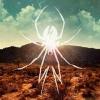

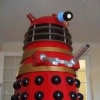
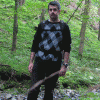


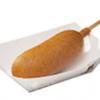
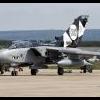

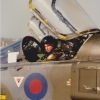
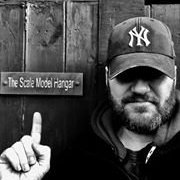
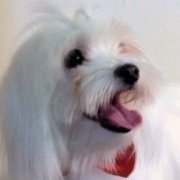



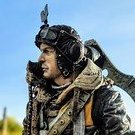

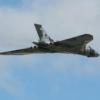
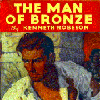
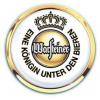



.thumb.jpg.d17ff607fc7e89ed057e63fcb6f2a888.jpg)

